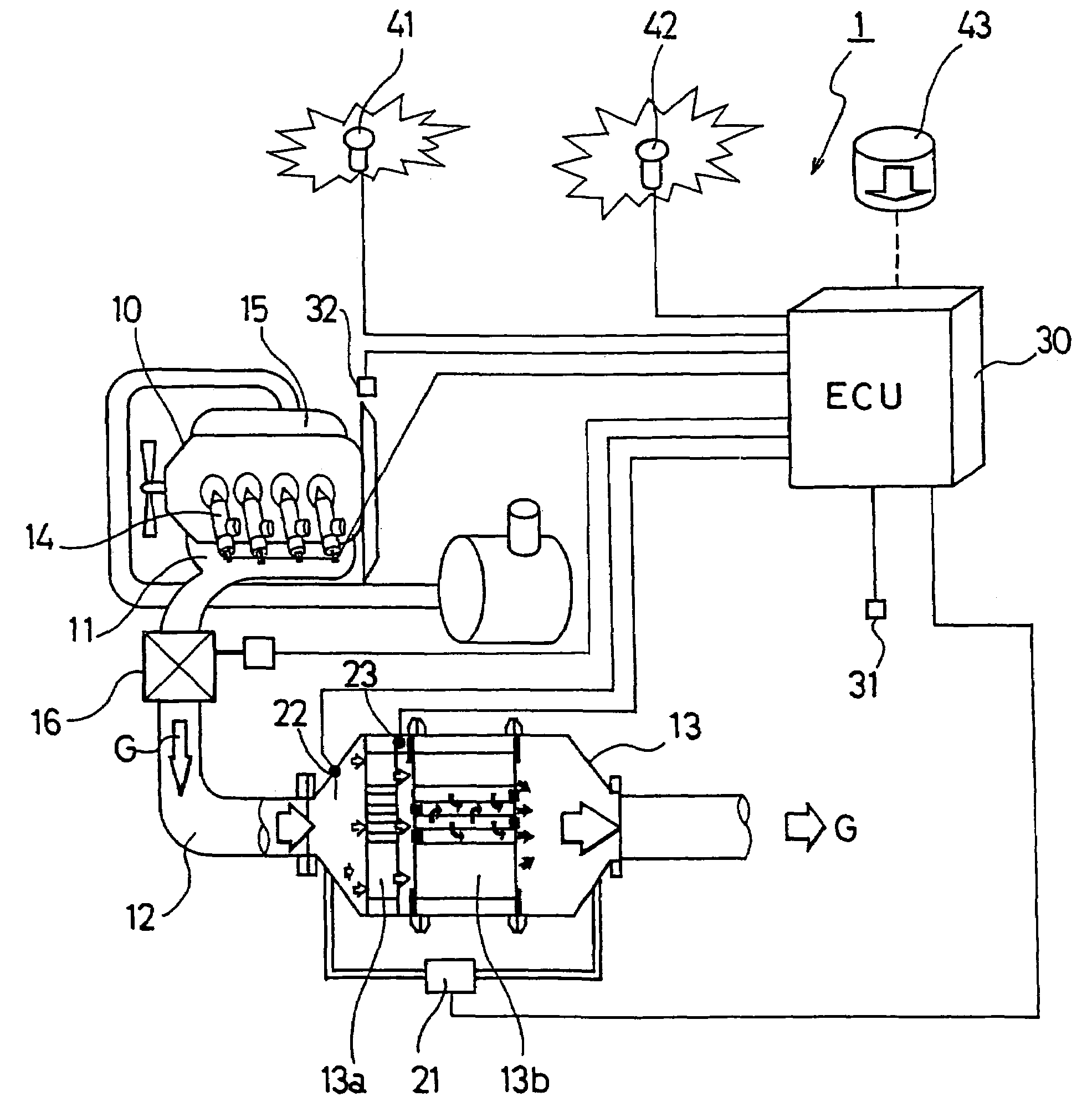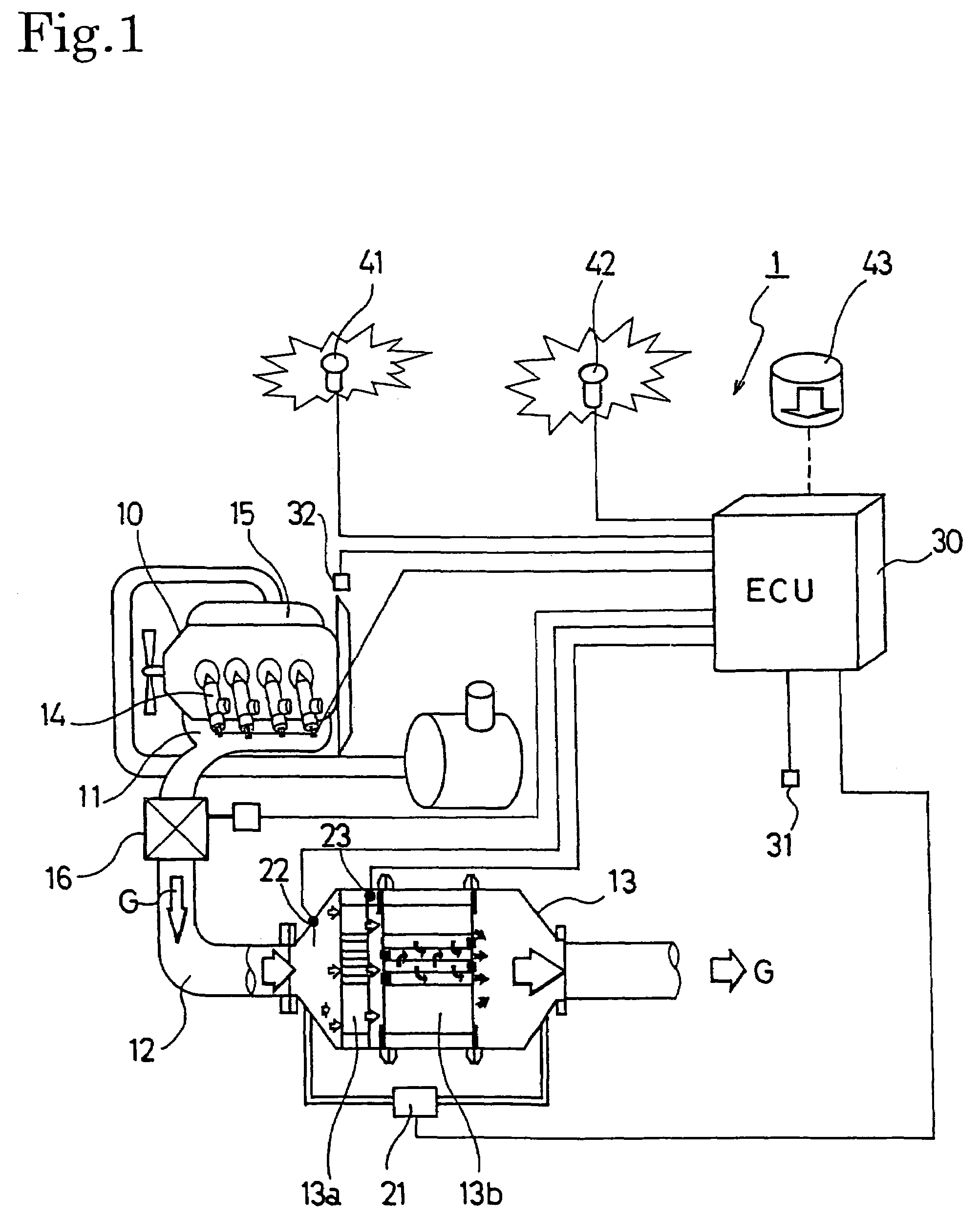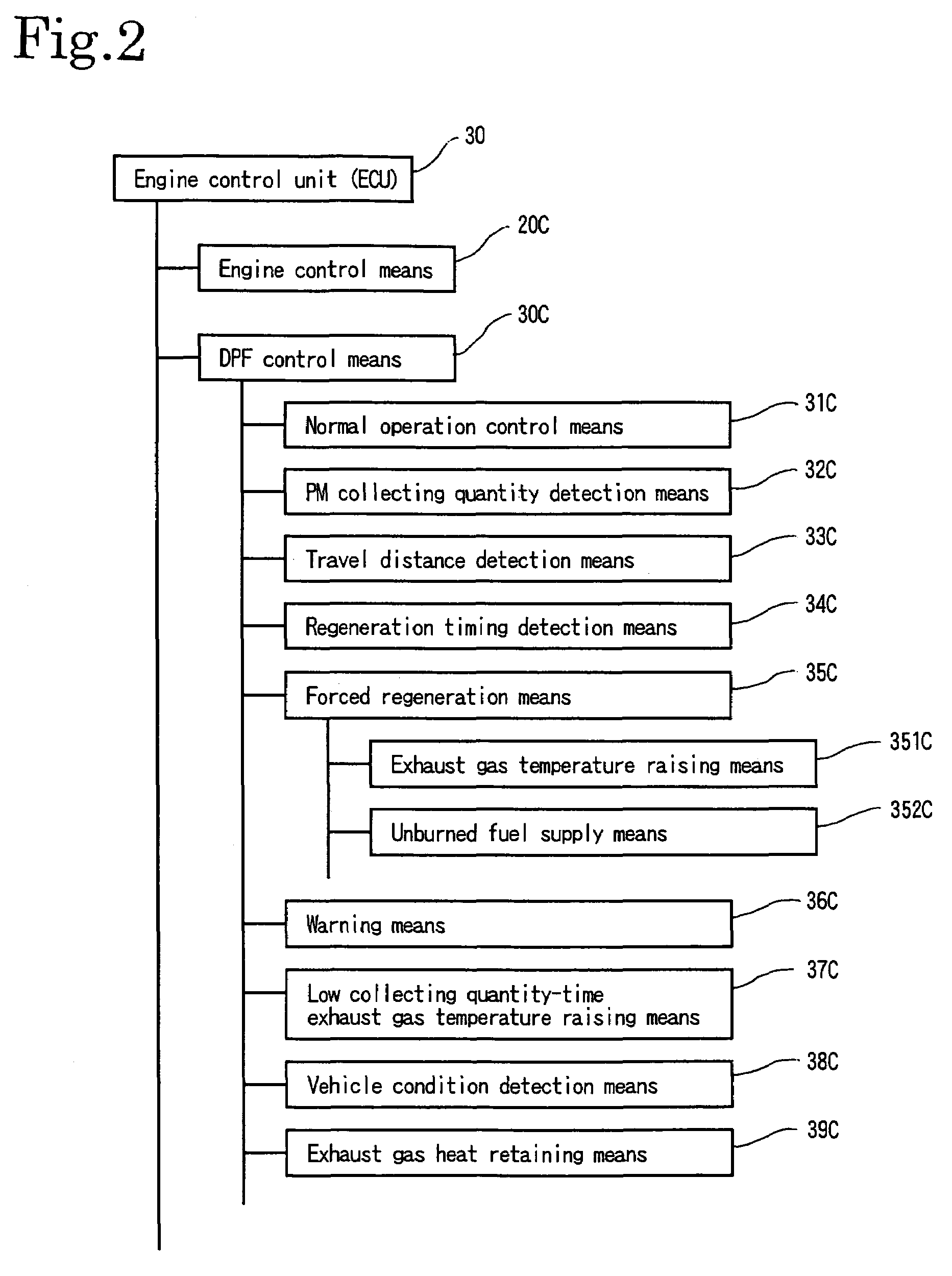Control method for an exhaust gas purification system and an exhaust gas purification system
a technology of exhaust gas purification system and control method, which is applied in the direction of electrical control, exhaust treatment electric control, separation process, etc., can solve the problems of increasing exhaust gas pressure as a result of filter clogging, increasing engine load, and increasing exhaust gas pressure, so as to promote the regeneration of dpf and improve the efficiency of self-regeneration of dpf , the effect of increasing the engine load
- Summary
- Abstract
- Description
- Claims
- Application Information
AI Technical Summary
Benefits of technology
Problems solved by technology
Method used
Image
Examples
Embodiment Construction
[0036]Hereinafter, the preferred embodiments of the control method for an exhaust gas purification system and the exhaust gas purification system according to the present invention will be described with reference to the accompanying drawings. The following explanation will use the example of an exhaust gas purification system provided with a continuous regeneration-type diesel particulate filter (DPF) device comprising a combination of an oxidation catalyst and a filter with a catalyst.
[0037][Configuration of Exhaust Gas Purifying System]
[0038]FIG. 1 shows the configuration of an exhaust gas purification system 1 for an internal combustion engine according to an embodiment of the present invention. This exhaust gas purification system 1 is configured to provide a continuous regeneration DPF device 13 and an exhaust throttle valve 16 on an exhaust passage 12 connected to an exhaust manifold 11 of a diesel engine 10. This continuous regeneration DPF device 13 is configured with an ox...
PUM
| Property | Measurement | Unit |
|---|---|---|
| temperature | aaaaa | aaaaa |
| travel distance | aaaaa | aaaaa |
| exhaust gas temperature | aaaaa | aaaaa |
Abstract
Description
Claims
Application Information
 Login to View More
Login to View More - R&D
- Intellectual Property
- Life Sciences
- Materials
- Tech Scout
- Unparalleled Data Quality
- Higher Quality Content
- 60% Fewer Hallucinations
Browse by: Latest US Patents, China's latest patents, Technical Efficacy Thesaurus, Application Domain, Technology Topic, Popular Technical Reports.
© 2025 PatSnap. All rights reserved.Legal|Privacy policy|Modern Slavery Act Transparency Statement|Sitemap|About US| Contact US: help@patsnap.com



